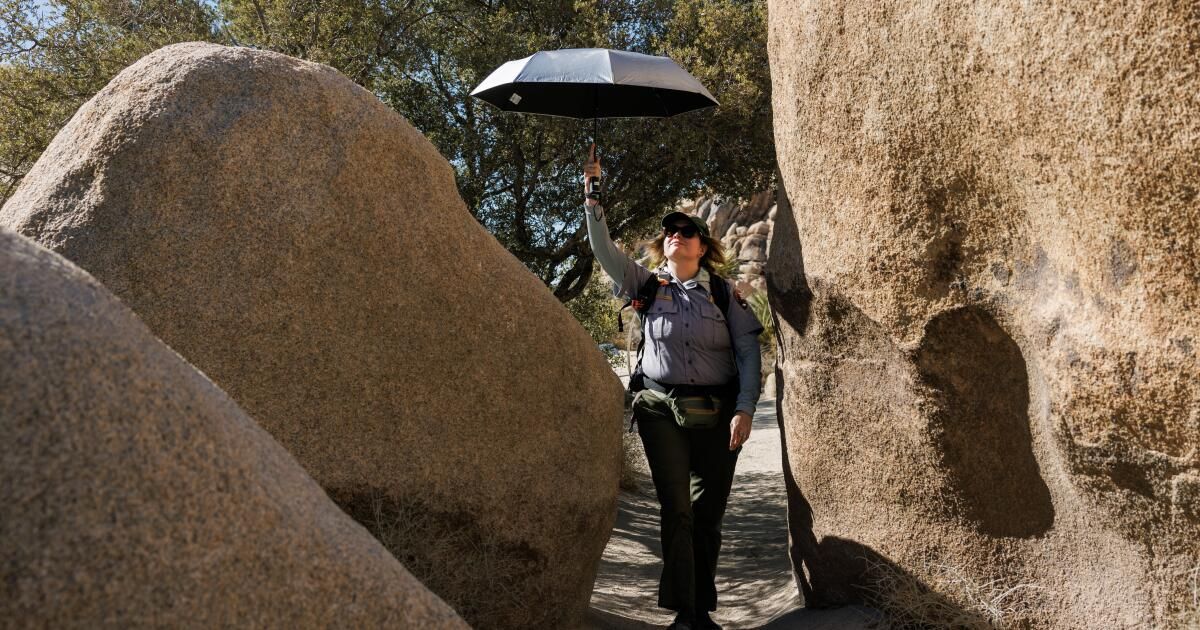Many more people are visiting Joshua Tree National Park these days. Maybe you are one of them?
In 2021, Ranger Anna Marini formalized the park’s Preventative Search and Rescue Program, one of the first in the national park system to be overseen by a dedicated ranger.
Their team of 30 volunteers seeks to educate people on how they can safely enjoy the park and avoid some common dangers and pitfalls.
Here are some of their tips:
When to go
Temperatures are usually milder in autumn and spring. Winters can be cold and summers very hot.
But you can visit any time of year, as long as you're prepared and have a flexible mindset. It's essential to check the weather forecast frequently, as conditions often change and storms can appear without warning. They can cause dangerous flash flooding, especially during the summer monsoon season that runs from July to October, so it's best to avoid the park altogether if rain is in the forecast.
If you're coming in the summer, be prepared to limit activities to short walks in the early morning or late afternoon, before 9 a.m. or after 5 p.m. Stargazing at night is also a good option. Bring extra water—at least two gallons per person per day if you plan to hike. Salty snacks help the body retain water and replace electrolytes. And don't wait until you're thirsty to drink. The heat and dryness cause sweat to evaporate quickly, so it's easy to become dehydrated.
Also, leave pets at home: the ground is too hot for them to be outside, and your car is too hot to leave them inside, even briefly.
In the colder months, dogs are still prohibited from entering the park's trails, except for Oasis of Mara and Keys View, but are allowed to walk around the campsites and on the many dirt roads that wind through the park.
Common dangers
In addition to the heat, there are multiple varieties of thorny plants (cholla is the most frequently cited), but it can be painful to run into a prickly pear, yucca or even a Joshua tree, Marini said.
Rattlesnakes are present in the park, but they are not aggressive. Bites that require an emergency response tend to happen only every couple of years, usually because the snakes camouflage themselves so well that people accidentally step on them. That's why it's important to be vigilant and avoid sticking your hands or feet into places you can't see, like cracks between rocks or bushes. That also helps you avoid other venomous animals that live in the park, including scorpions and black widow spiders.
Bees are usually most active in the summer when they are thirsty, and can be quite persistent. People often get stung when they swat them away. If you are allergic, you may want to visit at another time of year.
Desert tortoises aren't dangerous to people, but people can be dangerous to them. These slow-moving reptiles (considered an endangered species in California) can look like rocks, especially to drivers on park roads. Keep your eyes peeled and slow down. Check under your car before you start driving. And if you see a tortoise crossing the road, watch it from a distance to make sure it's safe. Never pick one up unless it's in immediate danger; they can urinate, and this loss of water can be fatal.
What to bring
Marini likes to tell people what the 10 essential items are that you should have no matter what time of year. Her team has created a series of Instagram reels that highlight these must-haves. They are:
- Sun protection: Hat, sunscreen, and sunglasses, at a minimum. The UV index is very high due to the lack of cloud cover and the reflective effect of light-colored sand and rocks, so you may also want to opt for protective clothing such as a UV-blocking t-shirt or hoodie and an umbrella.
- Food: There are no shops or vendors inside the park. It's good to bring more calories than you think you'll need, especially if you're going to be active. Salty snacks also help replace electrolytes lost through sweating.
- Water: At least one gallon per person, per day; more if you plan to hike on hot days or on difficult terrain.
- Navigation: Some prefer a compass and paper map, or you can download the NPS app for offline use.
- First aid kit
- Multi-tools: These typically include pliers, knives, scissors and files. It's also good to carry a simple plastic comb (which Marini calls “a fun desert tool”) to remove cholla spines.
- A flashlight or headlamp: Dusk can come on suddenly and the desert is extremely dark at night. People often rely on their phones as their only source of light, but that can quickly drain the battery.
- Sturdy shoes
- Layers of clothing
- Emergency shelter: This can be something as simple as a tarp or umbrella. “Our weather can be pretty crazy,” Marini said.
What to do if you get lost or need to be rescued
Whether you're feeling the effects of heat exhaustion or are injured, it's important to call for help as soon as you think you need it. Most areas of the park don't have cellphone coverage, but newer iPhones have an SOS feature that allows them to make emergency calls. In some places, you can also text 911, Marini said.
While you wait for help to arrive, try to stay in the shade and drink water. Most importantly, wait where you are. If your car breaks down, stay in it. Don’t try to walk out yourself, and don’t send someone from your group to get help. “It’s very difficult when people start moving because they get impatient,” Marini said.












